You can find my whole John Muir Trail gear list here (YouTube): Budget Gear List to Thru-Hike the John Muir Trail
*Make sure to read part one on our home page :)
Day five - 13 miles
We got a slow start out of camp this morning. Our bellies still full of burgers from Red’s Meadow, we were feeling sluggish and lazy, and the weight of our newly, resupplied packs did not go unnoticed. The past few days we had been leap-frogging a group of three men that Nick and I decided to call “The Dads,” unbeknownst to The Dads themselves. They were very friendly and on a similar pace as us, so we often passed them a couple of times a day. We later learned their real names were Mark, Ryan, and Tony. Seeing a familiar face was a feeling from the real world I never expected myself to miss so much. It was nice to have this feeling. But it didn’t last long. The Dads decided to resupply at Vermillion Valley Resort (VVR), and we did not. So we accepted the fact that we may not see them again on this trip. And we didn’t.
Today was the day we summited Silver Pass, which stands at 10,740 feet. On our approach, we passed a Southbound PCT hiker, who recommended we wait awhile for a storm to pass through before summiting. In the distance, we could actually see the clouds forming at the top of the pass, so we decided to pitch our tent at the base of the climb for a couple of hours and wait. We napped and played crosswords. We never got rained on, and many hikers came down the pass with no concerns, so we decided to finally summit. I honestly don’t remember much from Silver Pass, which probably means that the climb was mild. What I do remember is us being excited that we had a big downhill climb the next day into the valley.
It’s at these middle portions of the thru-hike that I wish I had kept a better journal instead of relying mostly on memory to write these reflections. Without detailed recaps, my days and memories blend together and I’m often left to wonder where a certain memory took place. Did we do this before Silver Pass or after? Was this landmark before we got into King’s Canyon? Sometimes I never find the answer. I will always keep a better journal from now on, even in my normal life.
Day six - 13 miles
These next few days are my low point. Mentally and physically. We were so excited about the downhill portion of the trail but failed to realize that miles and miles of downhill hiking can be worse than the uphills. Your joints suffer, and you are way more likely to take a wrong step and hurt yourself, which is what I did. I hyperextended my knee and collapsed during a particularly steep part of the trail. We rested for a bit, and I physically recovered enough to continue, but mentally I did not. For the rest of the day, I was crying at every inconvenience, including two intense water crossings. My lowest of lows, though, was on the way out of the valley. It’s funny, on trail I always felt like I was longing for the type of hiking I wasn’t currently doing. When I’m climbing up, I want to climb down. When I’m climbing down, I want to climb up. This climb was brutal, incessant, and steep. Mentally I couldn't take it anymore and ended up collapsing right in the middle of the trail, sobbing. The dirt was surprisingly cold and comforting. I don’t really know why I was crying. I knew this trail was going to be hard, but maybe I never expected to constantly not enjoy it. When I think about a challenging feat, like a thru-hike, I think of how rewarding that experience will be for the growth of myself as a hiker and as a person. But I never considered what that would look like in the MOMENT of the struggle. I have certainly reflected on this moment now and determined it actually was good for my mental toughness and confidence as a hiker, but at the time I was not having fun. It was the first time I voiced my concern of wanting to get off trail. I wasn't strong enough to finish this. There was no way any of this would be worth it. I don’t know how long we were there. But eventually, Nick coaxed me back up and we continued our ascent out of the valley and back into the mountains.
This cycle repeated for the rest of the hike. I would reach moments of mental or physical struggle and want to quit. Of course, I never actually acted on the quitting, but that didn’t stop me from exclaiming my desire for it. This is something I have struggled with my entire life, so I don’t know why I was surprised when it translated to the trail. When things get hard or scary, my gut instinct is to cry, whether it warrants crying or not. Every time this happens I am taken back to memories of myself in high school at the kitchen table struggling with a math problem, and crying. A memory of not understanding dimensional analysis right away in chemistry class and crying. Memories of the countless times I cried during piano lessons because I kept messing up and disappointing myself. I think that word sums it up perfectly: disappointment. When I don’t meet the expectations I have for myself, I cry. I’m not crying or frustrated with anyone around me or even the situation, I’m just disappointed in myself and my performance. Which is absolutely what was happening here.
Not long after the valley, we were met by five deputies and rescue volunteers looking for a missing person named Jimmy Cherry. He was supposed to meet with his group a couple of days ago and never showed up. Although we didn’t remember seeing him, a young kid behind us did, and they ended up finding him later that day. He was completely fine, just hiking slowly and severely sunburnt. People go missing in these mountains all the time, and I’m glad Jimmy was lucky enough to be found, a fate that most missing persons don’t meet.
One last gripe about valleys is the mosquitos. The mosquitos were definitely the worst part of the John Muir Trail, and in the valleys where it was wet and warm, they thrived. I am not exaggerating when I say we could not stop walking for five minutes without being swarmed by them. Thankfully we brought bug spray and I brought a bug net for my head, but Nick didn’t. He ended up buying one halfway through the trail. The part that sucked the most about mosquitos was camp. We could be camping in a beautiful spot, but we didn’t get to enjoy a single second because we had to immediately dive into the tent or risk being attacked by more mosquitos.
Day seven - 13 miles
Not much happened this day. We climbed over Seldon Pass, which stands at 10,800 feet. We hoped the mosquitos wouldn’t live in the higher elevations, but we were wrong. The ascent and descent of Seldon is really beautiful, with many crystal clear alpine lakes. We passed one around lunchtime and decided to break there where Nick dove into the icy water. Luckily, Nick was already wet because we had no choice but to get wet on the next river crossing. I think it was the coldest water I’ve ever been in, fed by the recent snowmelt.
We met a JMT Northbounder named Properly Chill, who told us a lot about the trail’s history. I’m embarrassed to admit that we didn’t do much JMT history research before hiking, which is something I regret, and vow to never make that mistake again for a thru-hike. Understanding the historical significance makes you appreciate the trail more.
The descent from Seldon was long and waterless. Water was something we didn’t worry about much on the trail because of the early summer snowmelt. But for some reason, this area was all dried up. I don’t like conserving my water. It makes my body feel tired and my mind stressed. In those moments, I find all I can think about is where the next water source might be. On our way down, we ran into a hiker who was so excited because they just came from Muir Trail Ranch (MTR). MTR is famous because it’s the only resupply spot on the JMT where you don't have to hike far off the trail. You can send in a resupply bucket there for a whopping $90, where they actually have to mule it into the mountains for you. We opted not to do this because we’re broke, but decided to stop at MTR the next morning anyways because the hiker was raving about the quality of their Hiker Box, where backpackers can leave food and supplies they don’t need for others to use (or eat!). We had also heard great things about MTR from the internet before we started our thru-hike, so we thought it would definitely be worth the short spur, especially after we enjoyed our visit to Red’s Meadow. Boy were we wrong.
Day eight - 16 miles
I have a lot to say about MTR. Our expectations were very high. All of the JMT blogs that we read and videos we watched before the hike talked very highly of it. We camped right outside and walked there first thing in the morning. We didn’t even eat breakfast because we figured MTR would have water and picnic tables available like Red’s Meadow for us to hang out and eat. As soon as we walked onto the property, the vibes were off. The designated “backpacker area” is, quite literally, fenced in. With barbed wire. You see, MTR is more than just a hiker stop, it’s a resort of its own. So non-thru-hikers come and stay in the cabins on the property as well. It was very obvious from the get-go that the owners of MTR wanted a very clear separation between hikers and resorters. Like they were afraid we would bite the guests if we escaped our pen. Once we got to our little hiker corral, I asked if they had a bathroom and they said no, but I spotted the outhouse in the distance right over the fence that I guessed was for resorters only. A little annoyed, I went to make breakfast at one of the picnic tables and spotted a sign that said “No use of backpacking stoves allowed”...okay, I see. An anti-loitering tool. With the fence, no bathroom access, and no cooking allowed, we did not feel welcome here at all as backpackers. At least there was still the hiker box to go through, right? Wrong. The lady in charge said they take the hiker box inside at the end of the day and donate what is left to the homeless. Which actually means the remnants will be muled out within the next few days and are being kept in the “back” for now. She explained that a new Hiker Box starts every day, and since it was early and no one else had been here yet, there was nothing for us. It's like they were doing everything they could to limit the amount of time and resources hikers used.
We had already wasted so much time this morning waiting to make breakfast, so we just ate some bars while two more hikers entered the pen. Their names were Numbers and Joline, two nice older ladies whom we talked to for a while. I think MTR used to be more like Red’s Meadow back in the day. But perhaps overuse/overcrowding of their land as the PCT and JMT get more popular, caused them to crack down on backpacker resources, which I do understand, but I had just heard such great things about it that I was disappointed. I don’t recommend going unless you sent a bucket, rent a cabin, or go later in the evening when the hiker box will be full.
Soon after leaving MTR, we entered the backcountry of King’s Canyon National Park, which follows the San Joaquin River. This is by far one of the most beautiful parts of the trail. The river is powerful and raging, and it’s easy to comprehend how it carved out this beautiful canyon. Landmarks like this are great for morale because they are measurable progress. We had now made it to 2/3 of the trail’s National Parks. Only one to go!
The JMT is relatively un-crowded, especially compared to other thru-hikes, like the Appalachian Trail, but there are some areas that are very popular. One of these is Evolution Lake, which is a camping area along a beautiful alpine lake. We usually try to avoid crowded campsites because of noise and bears, but this was one we felt we couldn’t pass up. The climb to Evolution Lake is brutal, but the lake itself is so rewarding. We could have enjoyed it more if it wasn’t for these damn mosquitos.
Day nine - 14 miles
Today we both woke up cranky. We didn’t sleep well because of the crowdedness of Evolution Lake, just like we feared. People stayed up late, tossed and turned at night (which you can hear from your own tent because everyone is sleeping on crinkly, blow-up sleeping pads), snored, or woke up early. I don’t even remember what we started to fight about, but whatever it was made me start my hiking that day alone. I only hiked for about a quarter of a mile before I waited for Nick to catch up with me. This was the one and only time we fought on trail. I decided it wasn’t worth being separated, especially because we were hiking Muir Pass today, which is considered to be one of the sketchier passes.
This pass stands at 11,955 feet, and we had been warned about the snowpack this year. All of the other passes had snow too, but most of it was avoidable, until now. The climb up wasn’t as difficult as we were expecting and we made it to the top by lunch. And guess what? No mosquitos here! So, we happily ate lunch at the top with many other hikers and checked out the shelter. Muir Pass was gorgeous and made me feel like we were now in the heart of the Sierras. The way down was long and snowy, but not enough to warrant spikes. The extra challenge of the snow made it feel more adventurous. I only cried once, which I actually felt was warranted this time because we had to cross a really scary snow bridge over a crevice. I don’t think I will ever be able to replicate the feeling of hiking through this part of the trail. This is why people love the Sierras. This is why we are here.
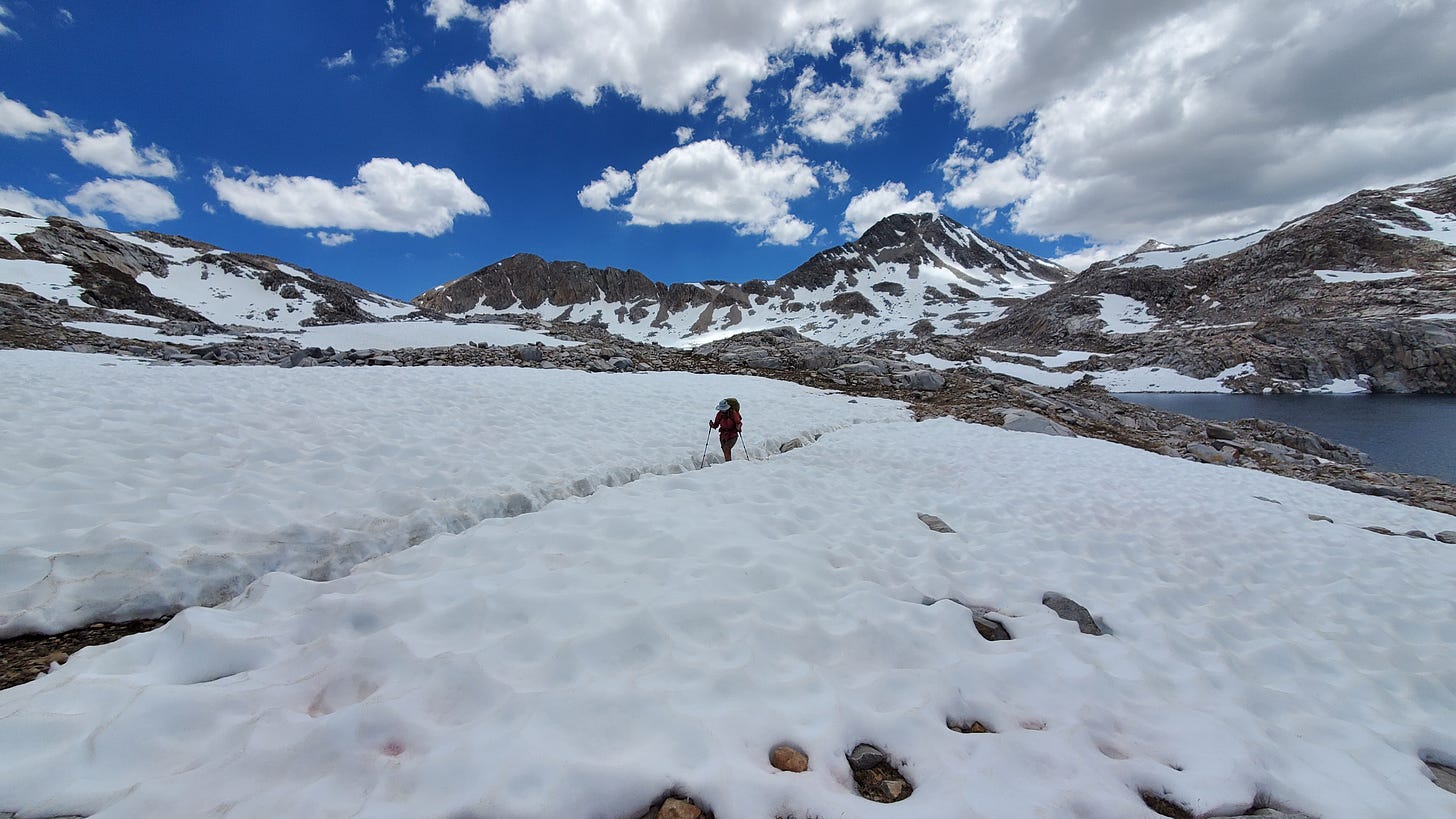
This section seemed easy to us, but that may have just been because our food was low and packs light. Tomorrow we would be hiking over Bishop Pass for our last resupply, which will take us all the way to Mt. Whitney.
Day ten - 12 miles
Resupplying in this section of the trail is tough. There are no close resorts like Red’s Meadow or Muir Trail Ranch, so you have to either hike off trail 12 miles (one way) over Bishop Pass and hitch into a town called Bishop or hike a similar mileage over Kearsarge Pass and hitch into Independence. Neither are great options. We found a resort closer to the Bishop Pass trailhead that holds resupply boxes called Parchers Resort, which would be a much easier hitch than all the way into town, so we opted for that. We dropped off our resupply box in person at the resort about two weeks prior. 12 miles out and 12 miles back onto the trail is 2 full days of hiking (plus doing Bishop Pass TWICE), which sucks, because you hike 24 miles and aren’t any closer to Mt. Whitney. But it’s your only option. So we woke up that morning, full of gusto, particularly excited for the gummy bears we packed in our resupply box.
Our excitement quickly waned when we realized how difficult this day was going to be. We knew we were in trouble when we looked on the map and realized the switchbacks we were about to climb were named, Ducy Switchbacks. These are the only switchbacks I have ever encountered that are christened, and it was for a reason. Looking back, I think the climb to Bishop Pass, physically, was pretty average, but when there is a resupply and possibly town food on the line, it gets more mentally difficult. I just wanted to get there. Quickly. Lots of tears were shed on the ascent and descent of Bishop Pass, which stands at 11,972 feet. The pass was stunning and secluded. I think we only saw about three people before we got closer to the trailhead, one of which was a Pacific Crest Trail hiker named Checkpoint, whom we kept leap-frogging on the way down. Another who was a trail runner, who passed us as we were ascending and descending…I hate those guys (I’m allowed to say that because I’m also a trail runner). The climb down got tougher when one of my blisters painfully popped. No, not on my feet, but on my hands. Over the past few days, the palms of my hands had been getting blisters from rubbing on my cork trekking poles. It was so painful and prevented me from using my poles for the last portion of the descent.
When we finally got to the trailhead in the later afternoon, we saw Checkpoint pacing around the parking lot looking for a hitch. This wasn't a good sign, since we estimated that we made it down here at least ten minutes before us. But the lot was full of cars, so we held out hope and offered to help him find a hitch as well. We approached an older gentleman with a truck named Bill, and he hesitantly agreed to take us to the restaurant down the road and Checkpoint all the way into the town of Bishop. Checkpoint and I rode in the back seat, and Nick rode in the bed of the truck. Checkpoint was lucky I was in there with him, or the car ride would have been very awkward and quiet. He wasn't much of a conversationalist, and I think the conversation eased Bill’s nervousness a little. I would be nervous too if I just picked up three strangers. I wasn’t nervous, and I don’t really know why, because this was my first time ever hitching a ride with a stranger. I should’ve been nervous.
When you are this tired and hungry, you don’t think straight. So when we decided to go eat at the restaurant before picking up our resupply, we didn’t think about Parcher’s Resort's closing time. We chowed down burgers and pizza, and thankfully the restaurant had WiFi so we could contact our families. I don’t even remember the last time I talked to them, but I sent them plenty of pictures and told them we should be finishing the trail in about seven days. I have no idea how good the food actually was, but we thought it was the best burger and pizza we’ve ever had, and decided it was time to head over to our resupply. The only problem was they closed in 15 minutes, and it was still 4 miles up the road. We called the lady at the resort, and she agreed to leave our package outside for us since we weren’t going to make it in time, but now we had to find a hitch there, and it was getting dark. We waited outside for a hitch for over 30 minutes. Two guys drove into the restaurant parking lot around the time we started waiting to drink at the bar and had a clear view of us trying to get a ride from every car that passed. After watching us for a while, one of them, named Frank, came out of the bar and said he would take us since we had been waiting for so long, which we were very grateful for.
Once we got to the resort, our problems weren’t over. By the time we got to Parcher’s, it was almost dark and we knew there was no way we would get a hitch back to the trail at this hour. Red’s Meadow allowed backpackers to camp there overnight for a $5 fee, so we thought Parcher’s may do something similar, but we were wrong (Can you tell yet that Red’s Meadow was my favorite resupply??). They said there was no backpacker camping allowed. We quickly decided that we would find a spot to camp in the woods close to the resort (which was not technically allowed either), but we didn’t really have another choice. We also had not showered in 10 days and were planning to here, but found out their showers were currently out of order…of course. This was our last shower chance, which means we would have to go the whole 17 days of our thru-hike without showering at all. Luckily, our resupply went well, and we found our box outside the front door, which is exactly where the nice lady said it would be. We filled our bear cans with seven more days worth of food and realized we had about 20 extra bars that were not going to fit. Whenever we pack a resupply box, we often overestimate how much food we will need…it’s better than underestimating! Not wanting them to go to waste, we went up to the first cabin we saw and asked the family inside if they wanted the bars. This is where we met Mark and Dolores, who were so excited by our offer and super interested in our thru-hiking story. We talked with them for over an hour and told them we would be camping somewhere in the woods tonight. They came up with the idea of us pitching our tent in their yard hidden behind their big truck so the resort managers couldn't see it, and we didn’t think long before accepting the offer because the thought of taking a walk into the woods after this long day was very unappealing.
Mark and Dolores were the beginning of our most important van life lesson that we like to call: Most People are Good People, which I think I will elaborate more on in a different post. The point is, Mark and Dolores had no incentive to help us. We were random strangers that they would probably never see again, but they did anyways. And for that, we are very thankful. The trail provides, and it brings people together. We made a full YouTube video about our best kind stranger stories that you can watch here: Most People Are Good People




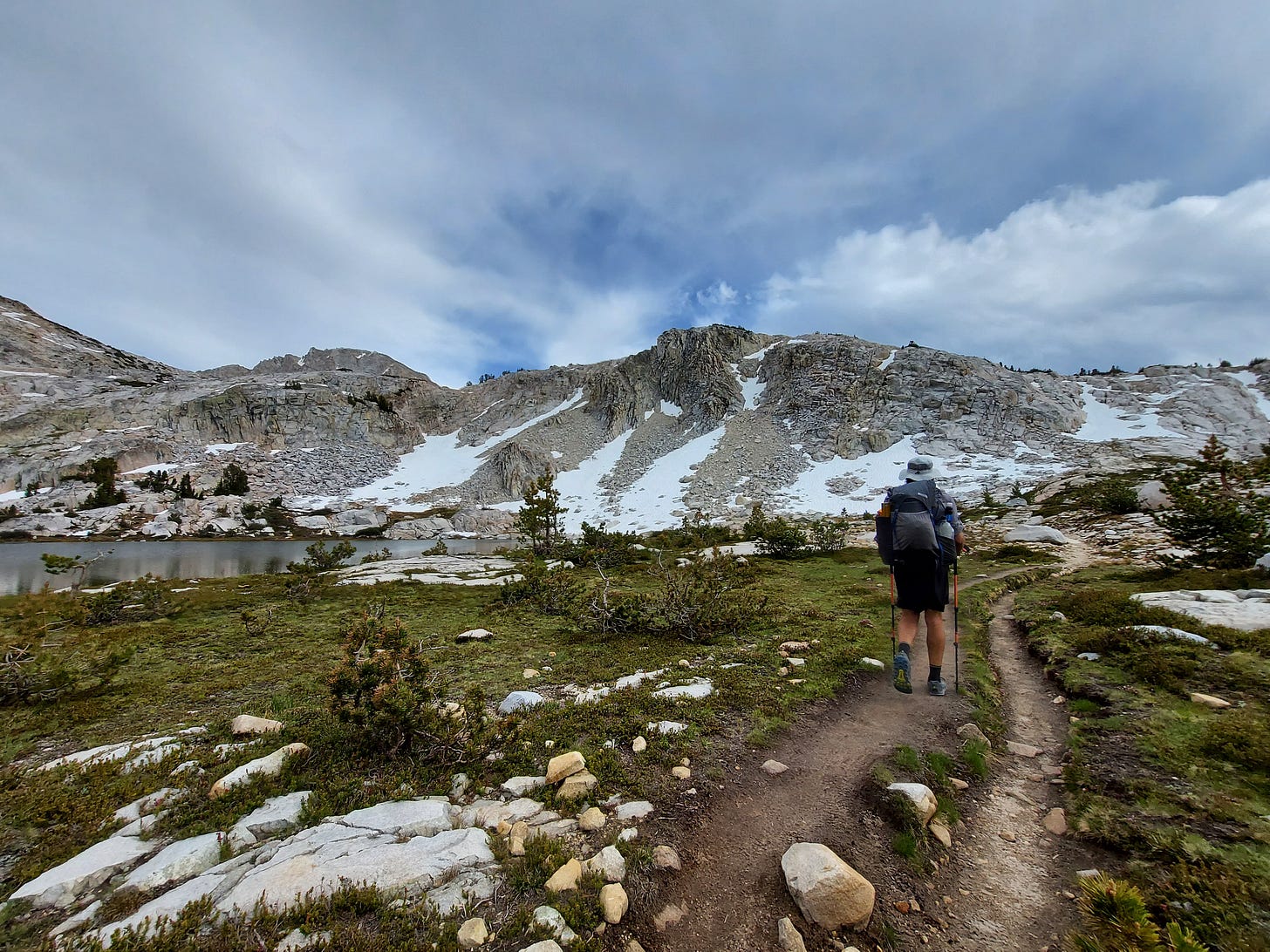


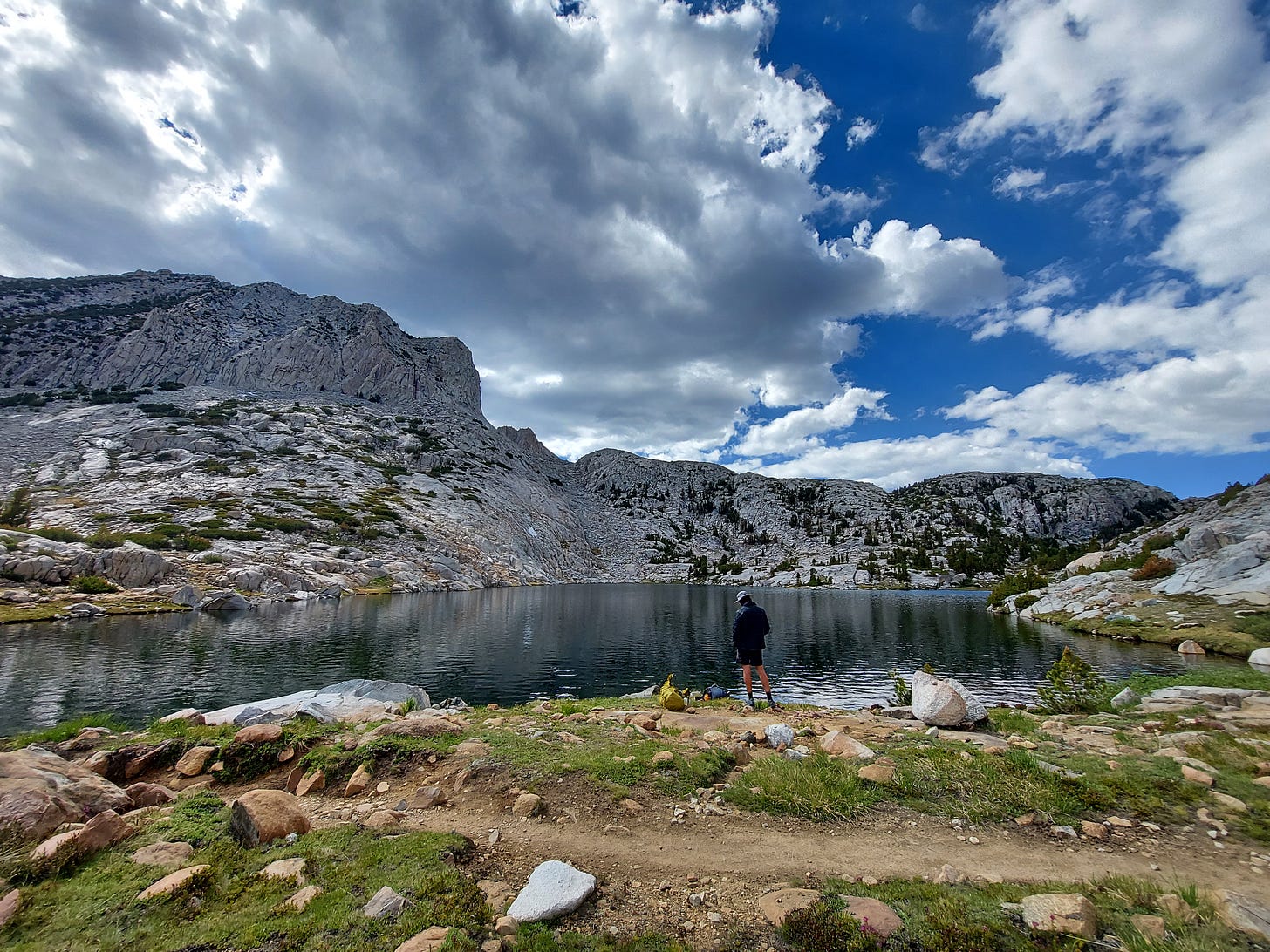

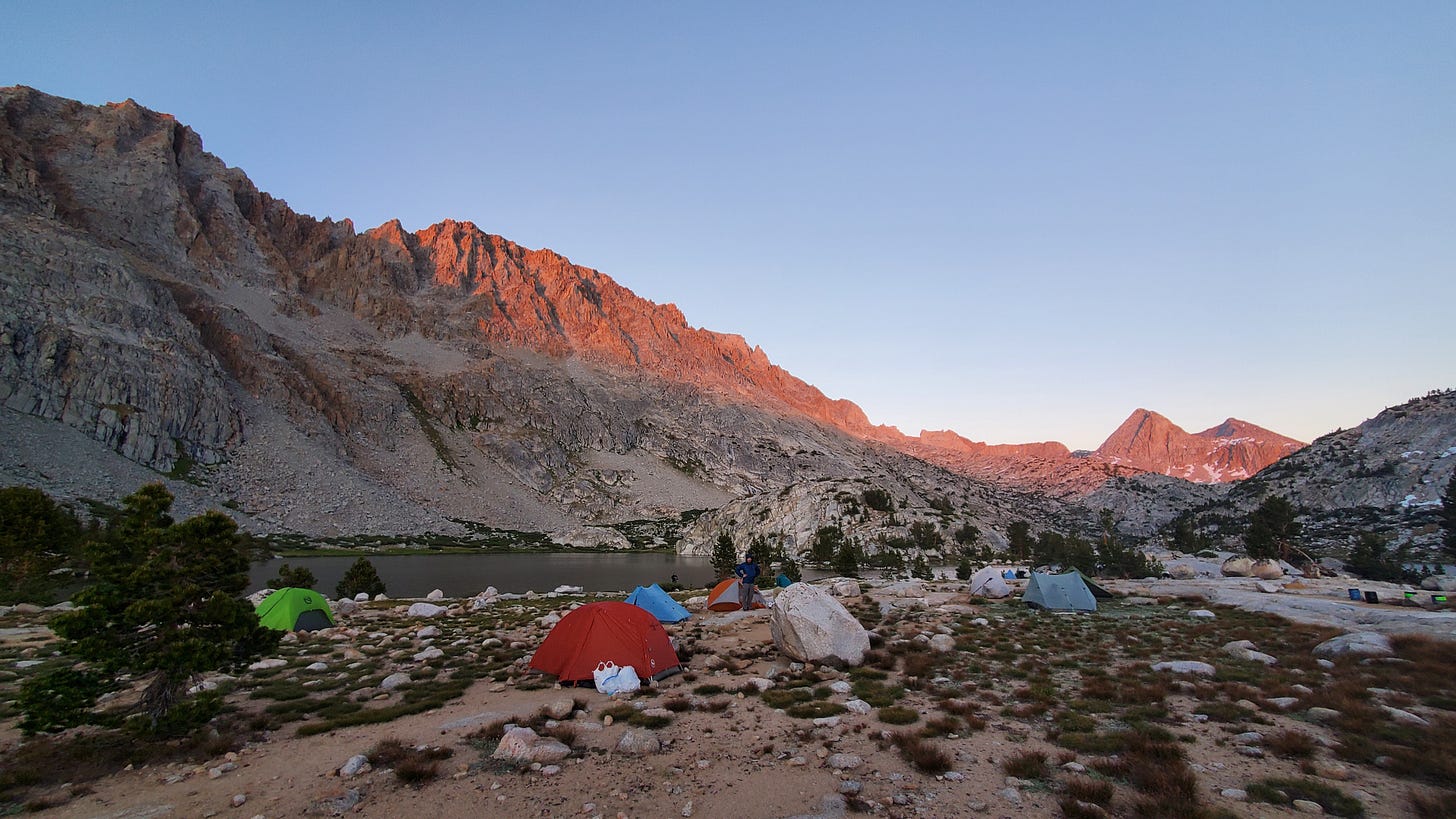

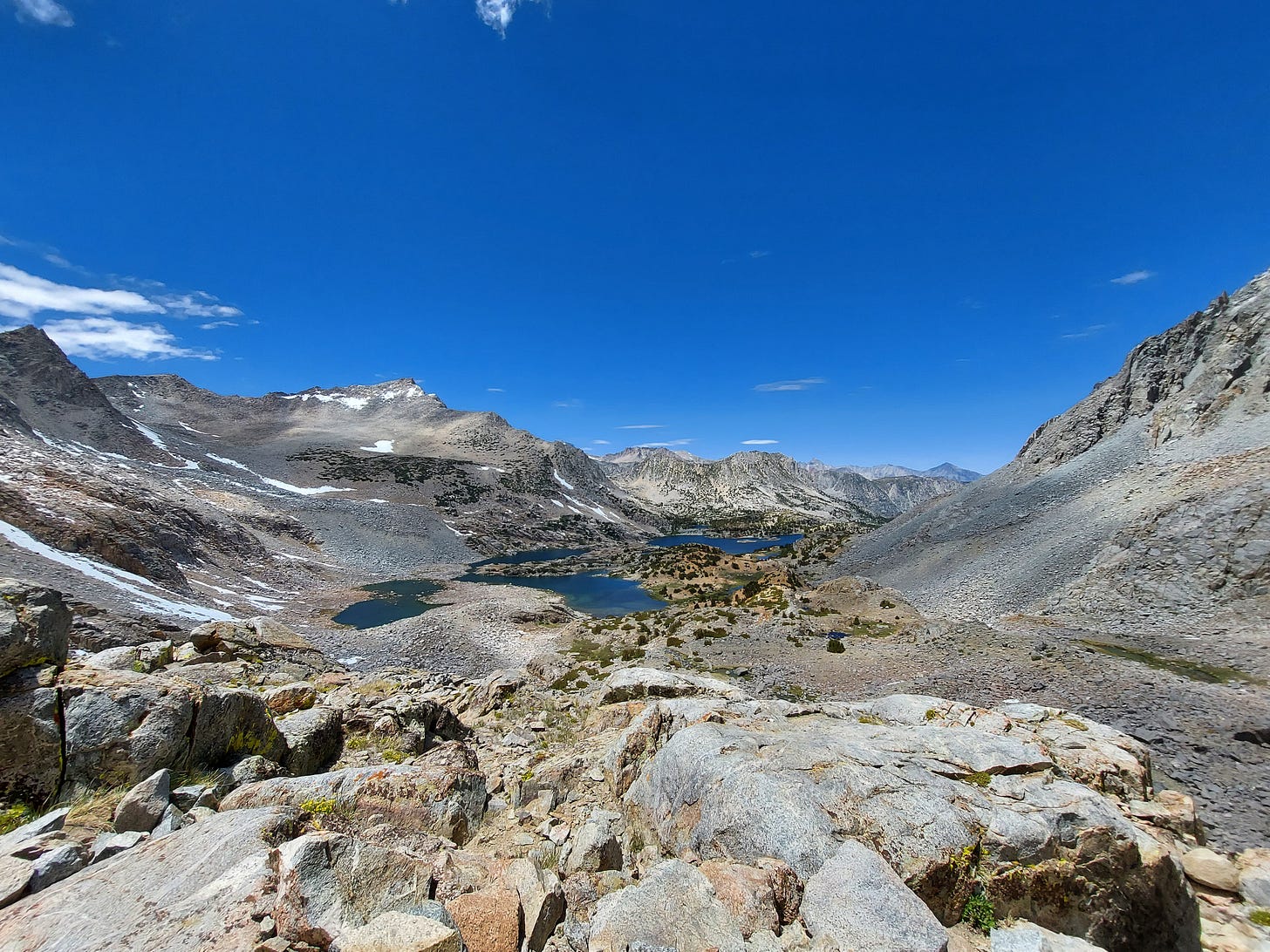
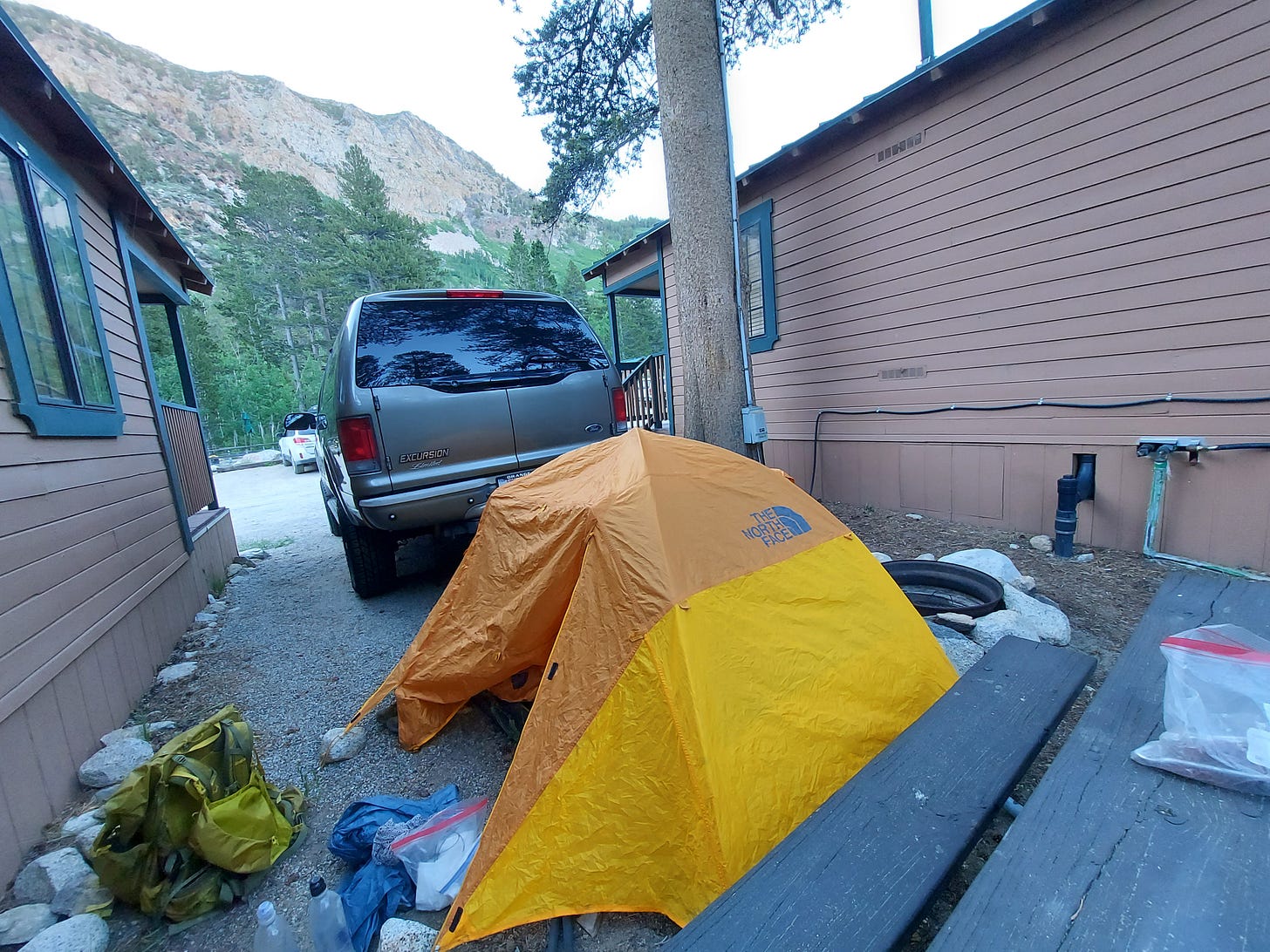
Just be careful. Your Mama would never forgive you if you get hurt. So good to read your journal.